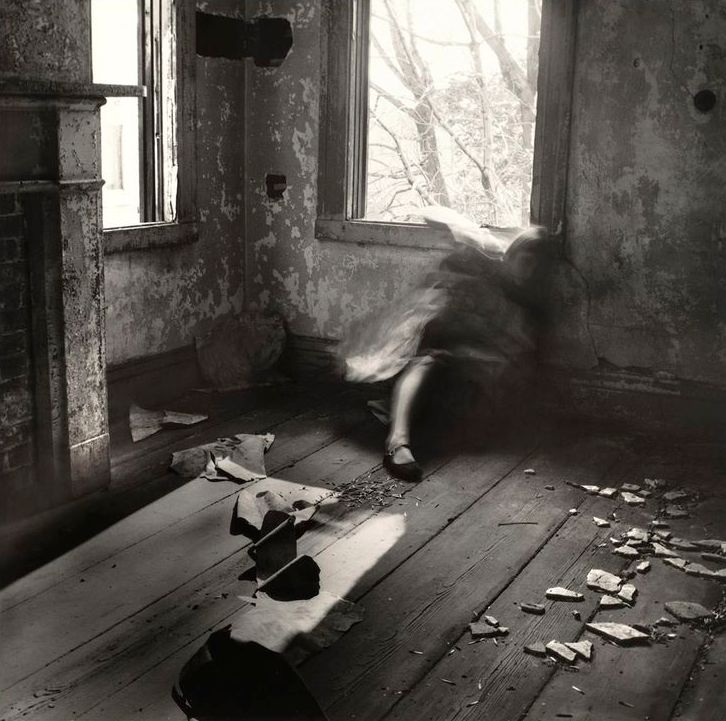
House #3 by Francesca Woodman, Providence, Rhode Island, 1976. © George and Betty Woodman
If we knew nothing about Francesca Woodman, and had only this photograph to go on, what conclusions could we draw? The room is solidly present, its dilapidated condition—the bare boards, the cracked and peeling walls—etched with clarity. The teenage girl is a phantom. Only her shoe is sharp; her leg and body are dissolving in a long exposure. A layer of something, probably paper, vibrates in front of her. She leans against the wall as though she is trying to merge with it and become one with the room. Her face is mottled with shadow, but she is looking at the camera.
Woodman (1958-81) was seventeen or eighteen when she made this picture of herself, and like many of her photographs, it is astonishingly accomplished for someone her age. She was that rare phenomenon, a prodigy of photography, her precocity already apparent in a self-portrait she took when she was thirteen. In her pictures, she is often the subject and sometimes, as in House #3, she appears to be hiding in plain sight, and even, we might wonder, trying to disappear.
She killed herself when she was twenty-two, during a period of depression, and that knowledge inflects any encounter with her images, turning them into potential clues, though this does her a disservice. While Woodman’s intensity and sensitivity are not in doubt, those who knew her insist she was well when she made her work. In The Woodmans, a documentary about Francesca and her artist parents, her friend Sloan Rankin—they met as students at RISD—describes the photographs as “pictures of a healthy person who’s looking at a fragile interior.” If we accept this view, the images are not about loss or self-effacement.
Woodman had a neat brush-off line for her recurrence as model. “It’s a matter of convenience,” she said. “I am always available.” Later, she involved other people in her set-ups. She was influenced by Gothic fiction and Surrealism, which she studied during a year in Rome. A highly gifted fabricator of scenes, using whatever came to hand, she was fully formed as an artist while still a student, and far ahead of everyone in her class. She left a body of work that has generated a stream of monographs and exhibitions. Does House #3, as some argue, share an agenda with feminist art of the 1970s, anatomizing the confinement of women in the home? Or does it belong to the lineage of experimental Surrealist photography alongside Man Ray, Dora Maar and Claude Cahun? As with any truly potent visual art, Woodman’s pictures inspire many interpretations and resist critical closure.
See all Exposure columns

